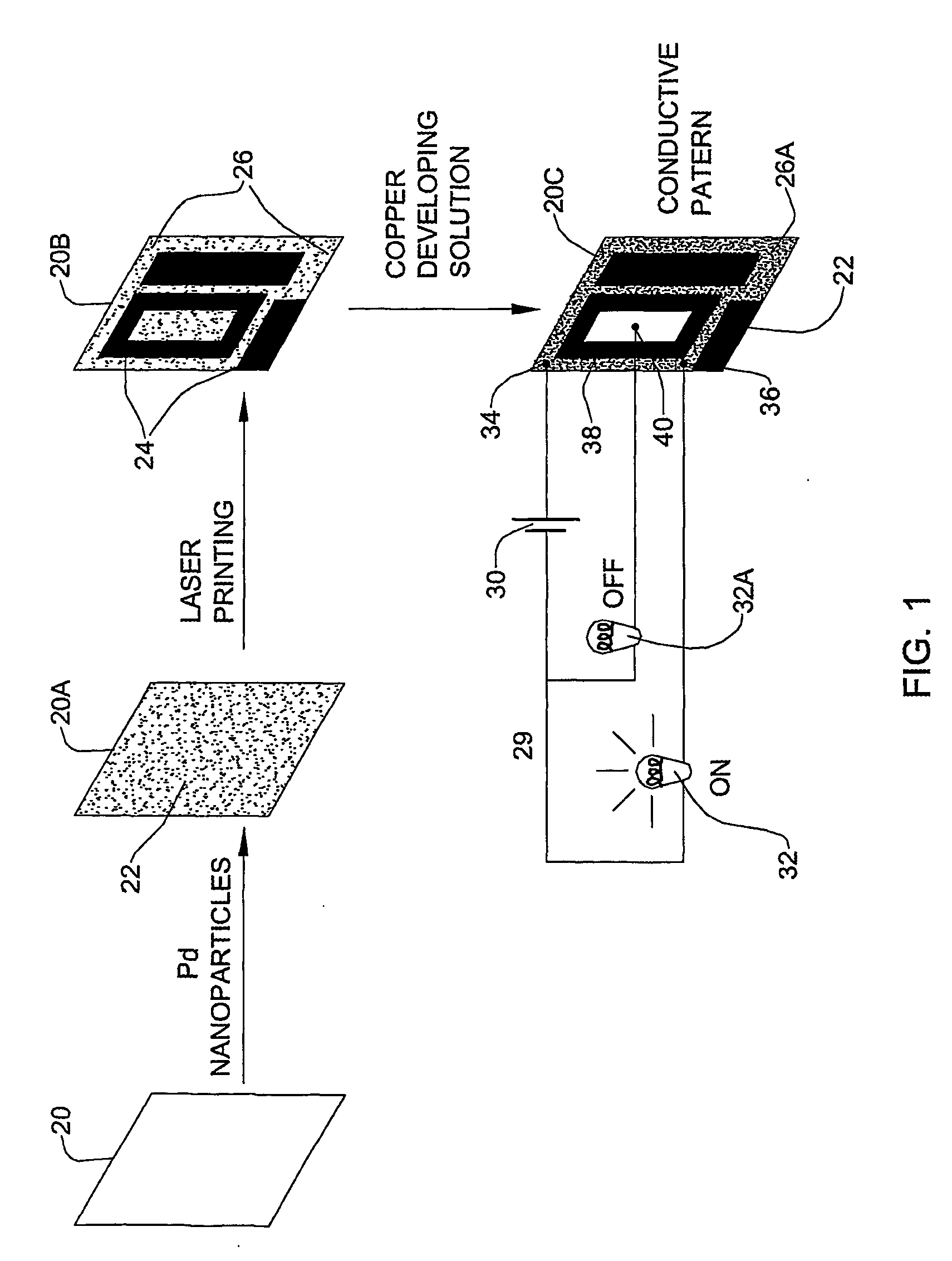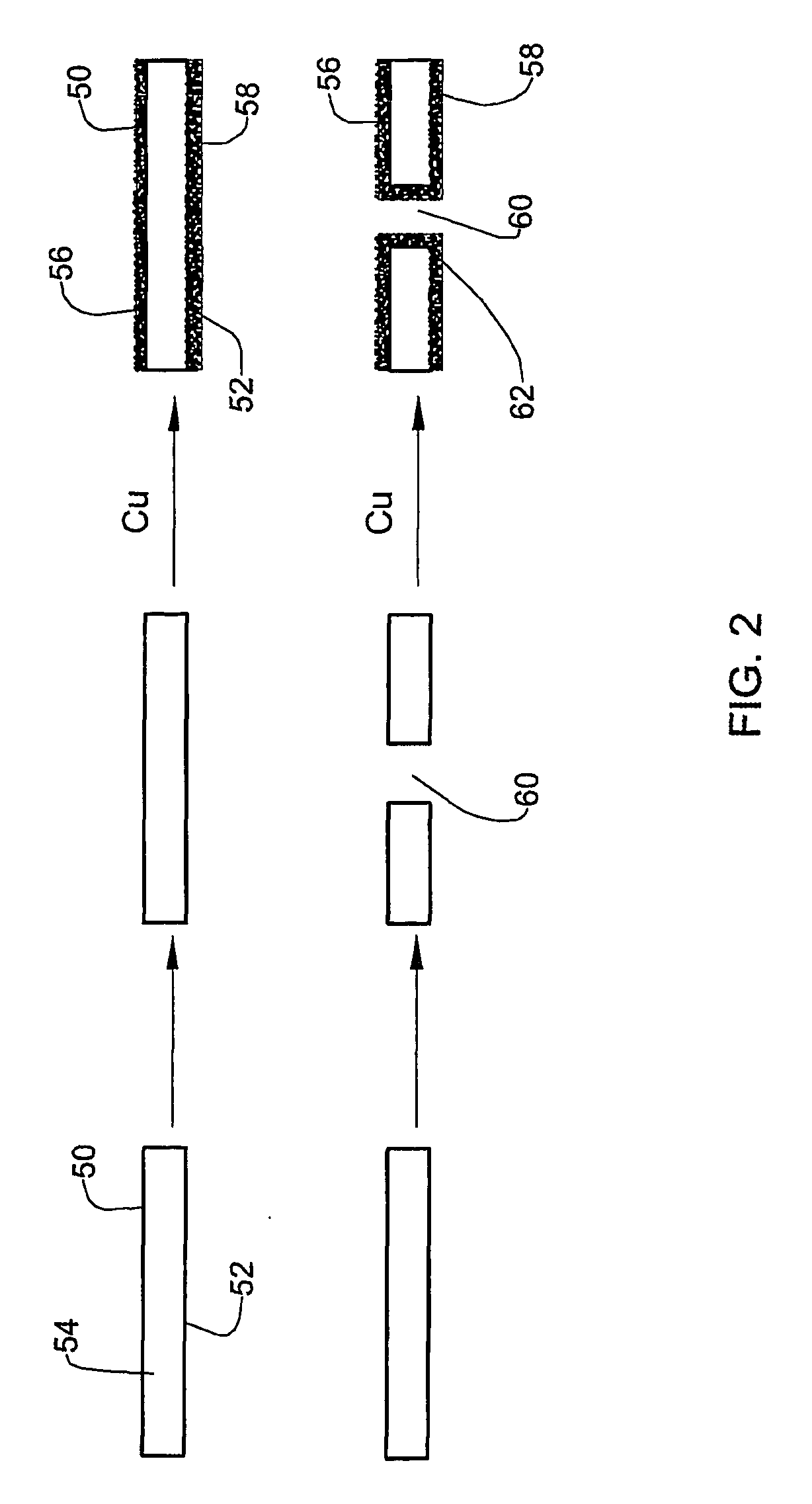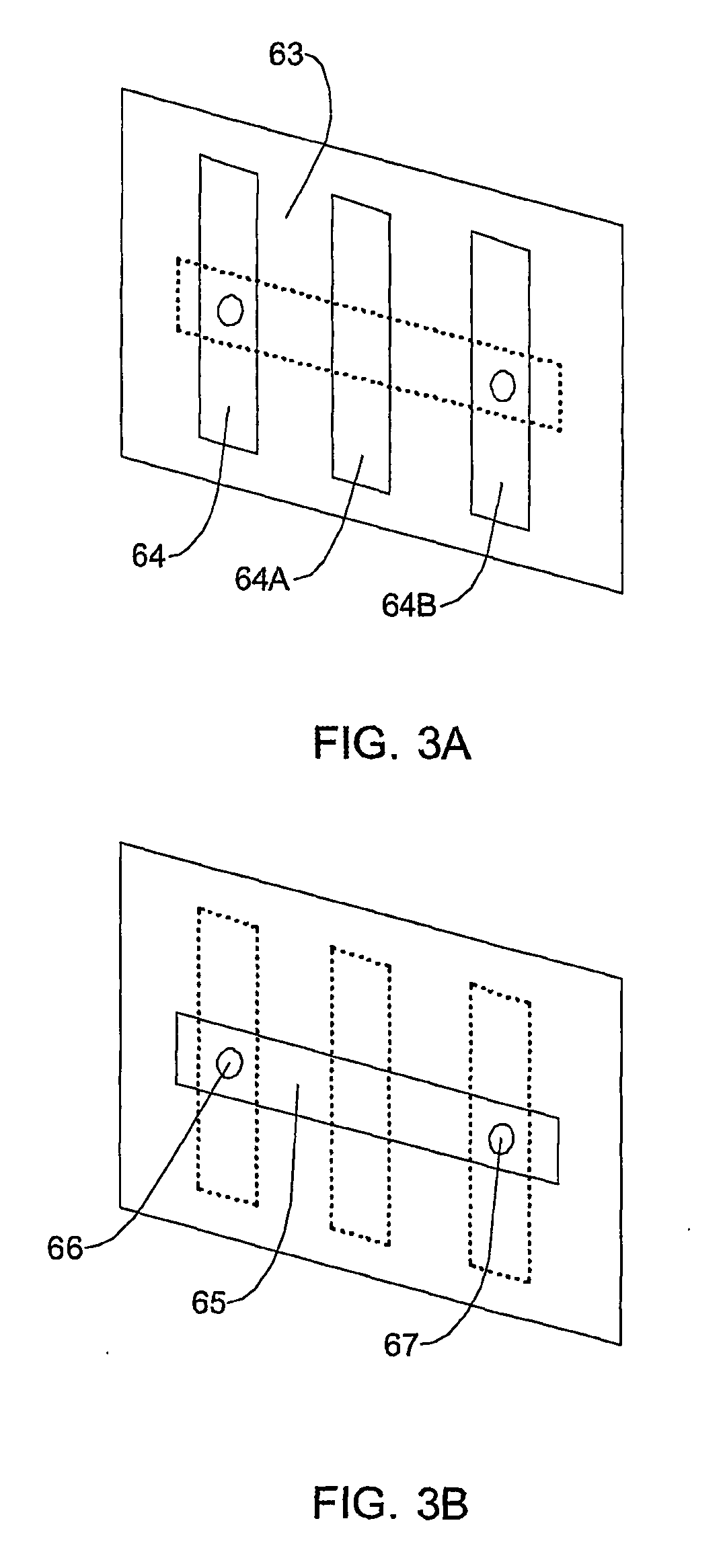Forming a conductor circuit on a substrate
- Summary
- Abstract
- Description
- Claims
- Application Information
AI Technical Summary
Benefits of technology
Problems solved by technology
Method used
Image
Examples
example
Pd-Nanoparticles:
[0045] Palladium nanoparticles were synthesized according to a literature procedure (P. C. hidber, W. Helbig, E. Kim, G. M. Whitesides, Langmuir, 12:1375-1380, 1996). Palladium (II) acetate (0.5 g, 2.23 mmol) and tetraoctadecylammonium bromide (625 mg, 0.56 mmol) were suspended in a mixture of toluene (20 mL) and THF (4 mL). Ethanol (3 mL) was added, then the mixture was stirred at reflux for 15 hours. After the reaction was cooled, ethanol (20 mL) was added and the nanoparticles were left for 24 hours to precipitate. The supernatant was decanted, then further ethanol (50 mL) was added, the nanoparticles were allowed to settle, and the supernatant was again decanted. The remaining slurry was dried under vacuum.
Pd-Treatment of the Paper:
[0046] Ordinary white laser printer paper was used. The dry Pd nanoparticles were dissolved in toluene at a concentration of 10 mg mL−. This solution was sprayed on the paper at approximately 1 mL per 100 cm2 (i.e. at a Pd-densit...
PUM
| Property | Measurement | Unit |
|---|---|---|
| Diameter | aaaaa | aaaaa |
| Electrical conductor | aaaaa | aaaaa |
Abstract
Description
Claims
Application Information
 Login to View More
Login to View More - R&D Engineer
- R&D Manager
- IP Professional
- Industry Leading Data Capabilities
- Powerful AI technology
- Patent DNA Extraction
Browse by: Latest US Patents, China's latest patents, Technical Efficacy Thesaurus, Application Domain, Technology Topic, Popular Technical Reports.
© 2024 PatSnap. All rights reserved.Legal|Privacy policy|Modern Slavery Act Transparency Statement|Sitemap|About US| Contact US: help@patsnap.com










